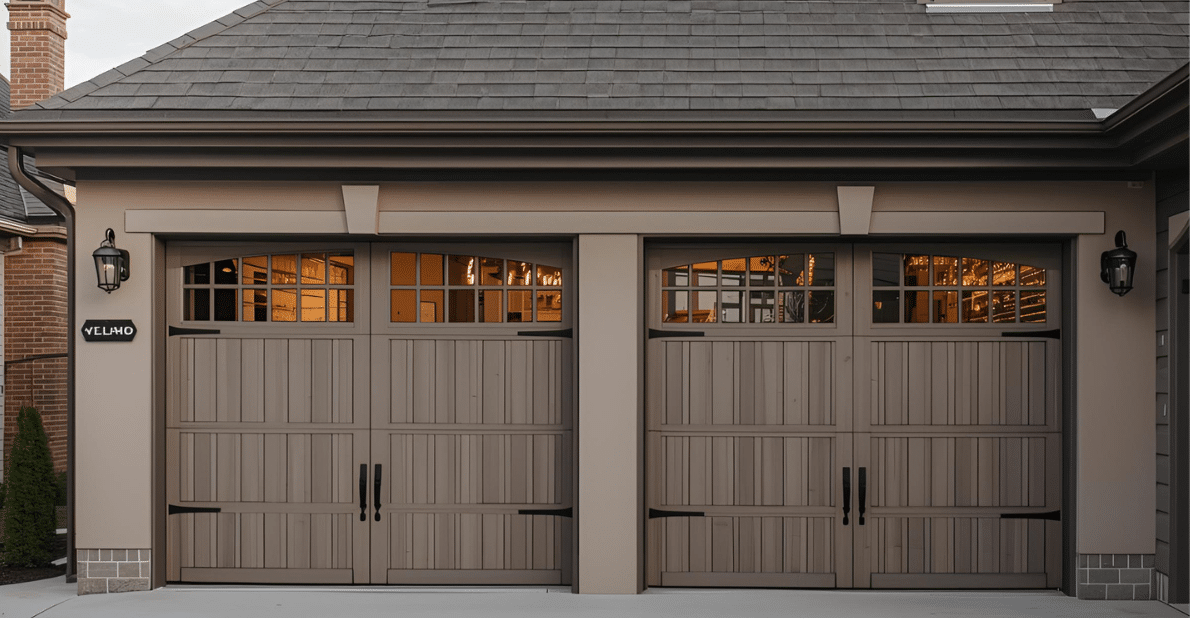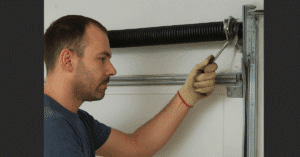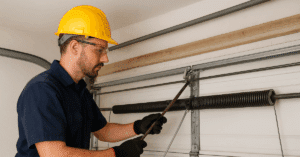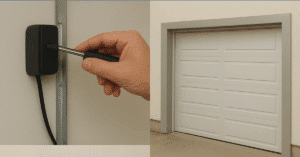A garage door is more than just a functional entryway — it enhances your home’s security, convenience, and curb appeal. When upgrading or installing a new one, it’s important to know the three main types of garage doors: sectional, roll-up, and tilt-up. Each type offers distinct benefits and features, helping homeowners choose the ideal fit for their property.
1. Sectional Garage Doors
Among all types of garage doors, the sectional garage door is the most common choice for modern homes. It’s made up of several horizontal panels connected by hinges. These panels bend and glide smoothly along a vertical track when the door opens or closes.
Advantages:
- Space-efficient: Opens vertically, making it ideal for short driveways.
- Insulation-friendly: Many models include insulation for energy efficiency.
- Customizable design: Available in various materials, colors, and finishes.
Disadvantages:
- Requires regular maintenance for springs and tracks.
- Higher cost compared to basic models.
Sectional doors are a great balance between style and functionality, making them a top pick among the different types of garage doors for residential use.
2. Roll-Up Garage Doors
The roll-up garage door is typically seen in commercial spaces but is becoming increasingly popular in homes with limited ceiling space. It’s constructed from steel slats that roll into a compact coil above the opening.
Advantages:
- Space-saving design: Perfect for garages with minimal overhead room.
- High durability: Built to withstand harsh weather and frequent use.
- Low maintenance: Fewer moving parts reduce wear and tear.
Disadvantages:
- Industrial appearance may not suit all home styles.
- Higher initial cost than sectional doors.
If durability and space optimization are priorities, this type of garage door is a smart choice for homeowners who value practicality.
3. Tilt-Up Garage Doors
The tilt-up garage door—also known as a single-panel door—is a classic design that operates differently from the other types of garage doors. Instead of sectional panels, it’s one solid piece that tilts upward on a pivoting hinge.
Advantages:
- Simple design: Fewer components make it easy to operate.
- Affordable option: Lower initial cost compared to advanced designs.
- Attractive appearance: Offers a clean, traditional look.
Disadvantages:
- Needs clearance space: Swings outward before lifting, requiring room in front.
- Less secure: Doesn’t always provide the same strength as sectional or roll-up doors.
Despite these limitations, tilt-up doors are a timeless option that adds charm and simplicity to many older and classic-style homes.
Choosing the Right Type of Garage Door for Your Home
Selecting from the three types of garage doors depends on your home’s layout, climate, and personal preferences.
- If you want maximum insulation and modern appeal, go for a sectional garage door.
- For tight spaces and durability, the roll-up garage door is ideal.
- And for simplicity and affordability, consider a tilt-up garage door.
It’s also wise to factor in maintenance costs, installation space, and design compatibility when deciding which door fits your lifestyle best.
Final Thoughts
Choosing the right type of garage door is more than just a design decision—it’s an investment in your home’s functionality, safety, and appearance. Each of the three types of garage doors—sectional, roll-up, and tilt-up—offers its own unique set of benefits tailored to different needs and spaces.
Before making your final decision, consider factors such as your available space, budget, and climate conditions. A professional garage door installer can also assess your needs and recommend the best fit for your home. Remember, a high-quality garage door not only enhances your home’s curb appeal but also improves security, insulation, and daily convenience.
No matter which type of garage door you choose, investing in a quality model and scheduling regular maintenance will ensure smooth operation and long-term value. A well-chosen garage door truly completes your home’s exterior—offering both beauty and performance for years to come.





